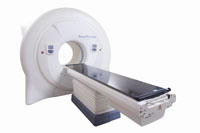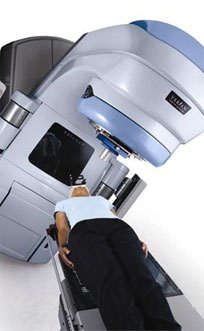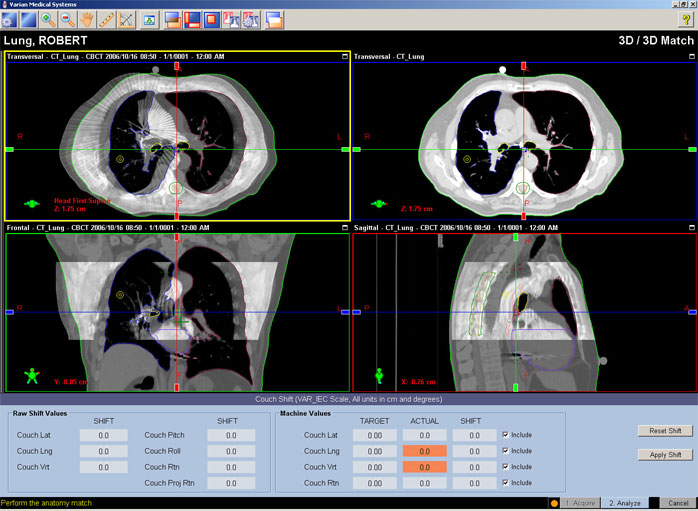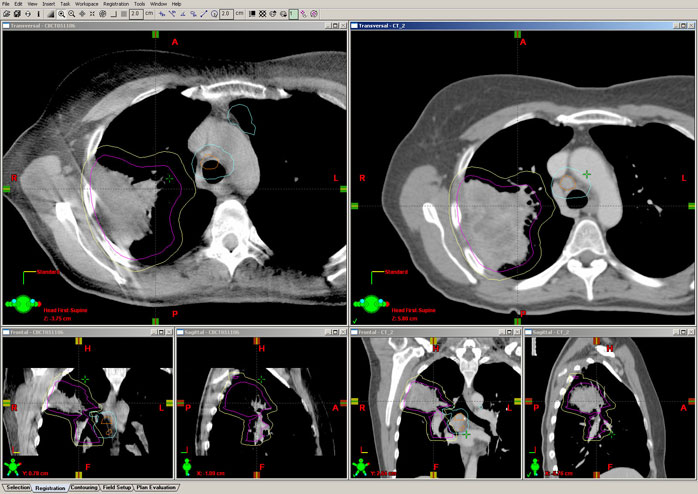Home » Treatment and Services » Image Guided Radiation Therapy
Image Guided Radiation Therapy

Image-guided radiation therapy (IGRT) is a process of using various imaging technologies to locate a tumor prior to turning the radiation beam on. Radiation oncologists use image-guided radiation therapy, or IGRT, to help better deliver the radiation to the cancer since tumors can move between treatments due to differences in organ filling or movements while breathing. All patients first undergo a CT scan as part of the planning process. The imaging information from the CT scan is then transmitted to a computer in the treatment room to allow doctors to compare the earlier image with the images taken just before treatment. Radiation Oncology Associates is proud to offer the Trilogy® and Trubeam IMRT and IGRT treatment units. Together, these devices, called linear accelerators allow us to deliver the most contemporary, precise and safest radiation possible.
This allows us to better target the cancer while avoiding nearby healthy tissue. IGRT is complementary to IMRT. IMRT is used to improve the radiation delivery precision and IGRT is used to improve the radiation delivery accuracy.
Radiation Oncology Associates is proud to offer the Trilogy® IMRT and IGRT treatment units. Together, these devices, called linear accelerators allow us to deliver the most contemporary, precise and safest radiation possible.

Trilogy®
The Trilogy radiation machine offers state of the art image guidance capability with real time CT capability. Trilogy® also offers the capability of performing non-IMRT treatments especially for certain cancer types where IMRT is not the best way to treat the patient. In addition, trilogy allows a radiation oncologist to deliver the most precise delivery of radiation to small tumors within the brain or other parts of the body. This treatment is known as stereotactic radiosurgery or SRS. Among the technological innovations that come with the system is “respiratory gating,” which tracks the position of a tumor in sync with a patient’s breathing, turning the radiation off and on to compensate for motions of inhalation and exhalation. The technology enables a physician to choose exactly the right moment to target a tumor, allowing increases to radiation doses while protecting healthy tissues. Of equal importance, the Trilogy system can target with high specificity a tumor that lies problematically close to the spinal cord, optic nerves, brainstem, skull base and other critical organs. This unparalleled accuracy can lead not just to better outcomes but also to greater efficiencies, shorter hospital stays and reduced risk of complications.


Radiation Services & Technology
Image Guided
Radiation Therapy
Intensity Modulated
Radiation Therapy
Selective Internal
Radiation Therapy
Proton Beam
Radiotherapy
Pediatric
Radiation Oncology
Radiation Therapy
Benign Disease
Radioisotope
Therapy
Stereotactic
Radiosurgery






